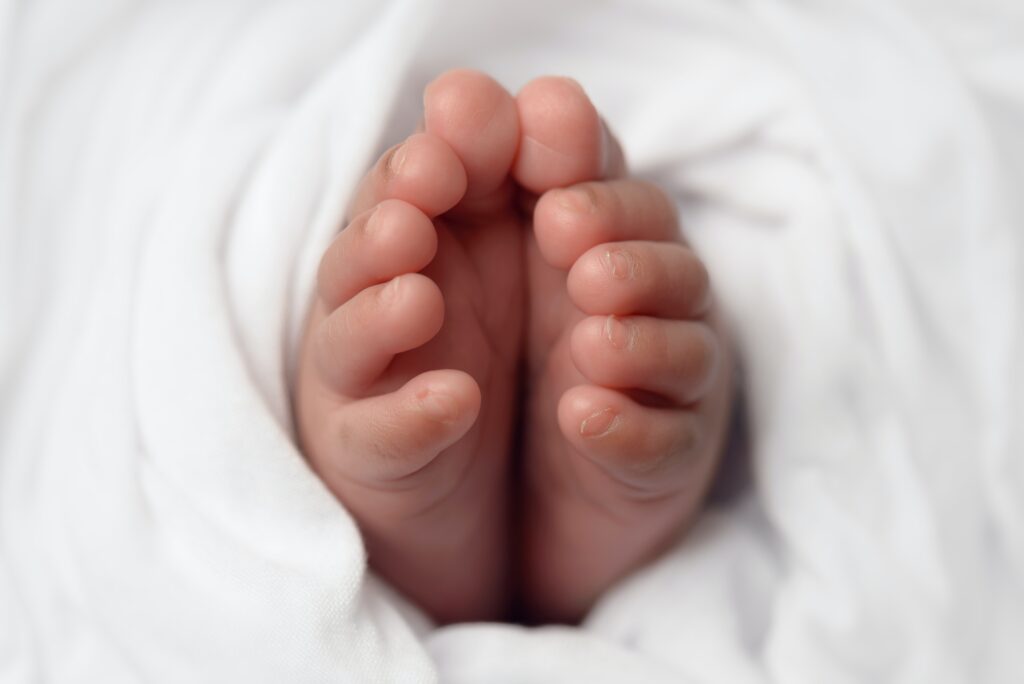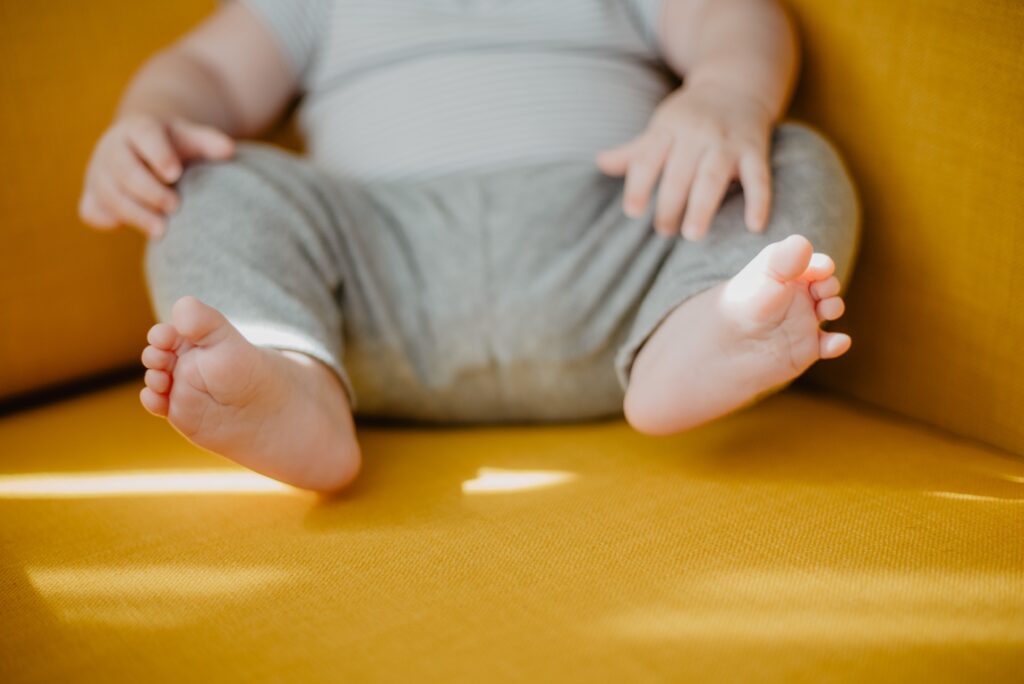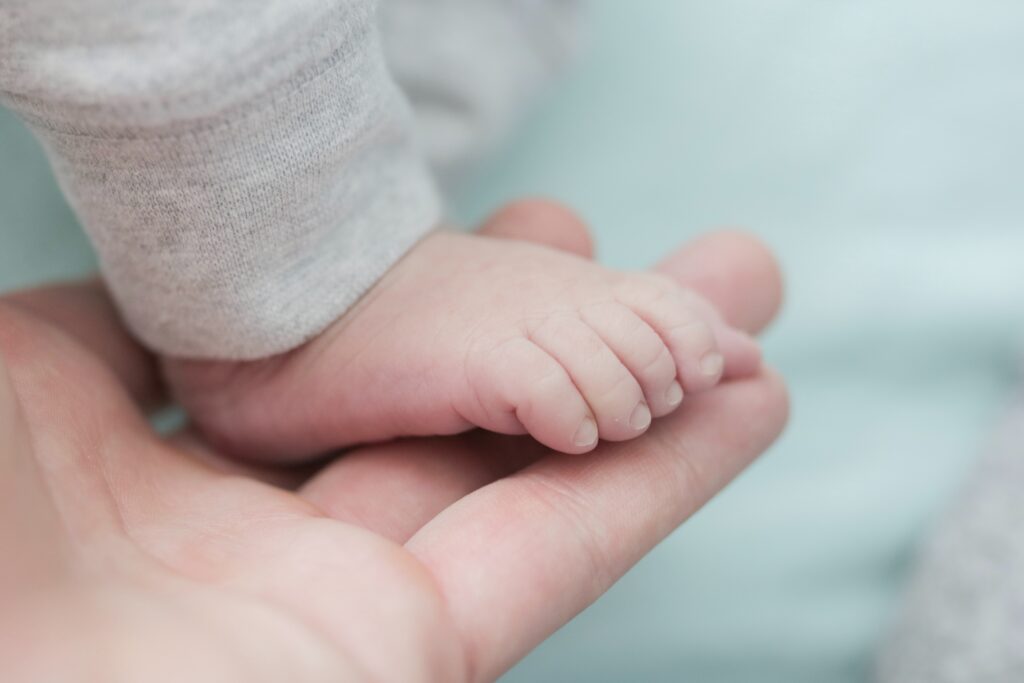3 Stages of Baby Toes Development! There is a lot to keep an eye on as your kid is growing and developing, but their feet are incredibly vital. Maintain their focus by keeping their feet in mind! Here are some pointers to keep an eye on your baby’s toes: Podiatrists agree that tight shoes are a no-no. It is much more crucial to ensure that baby feet are not constrained to tight shoes for the same reasons we avoid tight-fitting shoes in adults. Do you or your partner have broad feet? This could have been passed down to your child! Their bones are not fully grown, resulting in abnormalities like bunions, hammertoes, and even flat feet. The remedy is to ensure their shoes are loose-fitting until they start walking and require additional support! Help them emulate the necessary activities in walking before they can walk. This can be accomplished by having them ride a bicycle on their backs! Guide your baby’s legs gently in a cycling motion. Massage and light manipulation of their lower limbs will promote healthy circulation and sensory development.
Little Baby Toes!
Keep an eye on those baby toes daily! Not only are they adorable and delightful to play with. Inspect your baby’s toes, toenails, feet, and ankles daily will help you spot anything unusual early on. Take note, for example, if you’re assisting your baby in moving their legs and toes for exercise and observe that one area of their foot appears particularly sensitive. Always address concerns with your baby’s podiatrist and pediatrician as soon as possible! If you’re ever unsure about something, don’t be afraid to ask! Although it may appear to be a minor effort, beginning foot problem prevention is the most pleasing thing you can do for your child.
Why are Baby Toes So Adorable?

What parent hasn’t grabbed their baby’s adorable little feet and nibbled on their sweet little toes? We’re all guilty of it, but what causes us to desire to devour our babies? Actually, there is science behind why we have this impulse. The response is triggered by the innocent infant fragrance, compared to how hungry people feel when confronted with a great meal. Researchers at the University of Montreal discovered that when women smelled a two-day-old infant, their brains lit up like they would if they had consumed other addictive substances, such as cocaine or alcohol. It’s referred to as “cute aggressiveness” or “dimorphous expressions.” The natural smell of a baby activates the same areas of the brain as other addictive substances, including narcotics, alcohol, and delicious food, implying that your compulsions are entirely natural. The study discovered that humans are built to desire to nurture them, which can manifest as wanting to nibble on your child’s foot because it is the sweetest thing imaginable. They want to bite your brain’s peculiar reaction to sweetness.
Babies inherently entice people to fall in love with them, a trick Mother Nature has bestowed upon them. They melt our hearts, whether it’s their substantial gorgeous eyes or cute little button noses and heavy limbs. It’s not so much that you want to eat them as a meal as you want to be as near your baby as possible.
So, the next time you get the overwhelming need to embrace your baby or bite on those lovely chubby toes, give in; it’s nature’s way of expressing your all-consuming unconditional love for your child.
Baby Toes and Feet Development

Babies have incredibly adorable feet, with tiny, straight toes and smooth, pink skin. Because a newborn’s feet are formed mainly of fatty tissue (muscles, ligaments, and tendons), they are soft and malleable. Although the newborn does not walk until about 15 months old, the ability is already encoded into the baby’s biology. If you hold the baby in your arms and gently stand him on a surface, he will move his legs as if he is walking. This “stepping reflex” is present at birth and goes away after 6 weeks.
After 9 months in a protective fluid cocoon, your baby’s new feet may be blue, wrinkled, and peeling like the rest of his body. Don’t worry. The feet will pink and plump as soon as the infant warms up. Babies have flat feet because they are born with a fat pad, even in the arch. Their leg and foot muscles must be developed more to maintain their standing. In fact, the hook is visible at the age of seven.
The Developmental Stages of Baby Toes and Feet

A baby’s feet develop in three stages. They are as follows:
Crawlers and pre-walkers:
Crawlers and pre-walkers This category includes children who have yet to demonstrate an interest in walking or standing. The baby’s feet begin to take shape between 6 to 10 months of age, and several crucial processes occur during this stage. By their first birthday, the baby’s feet should have grown three sizes and measured half the length of their ultimate adult foot! Newborns’ feet are incredibly frail, with no bones and only spongy cartilage – which gradually ossifies into the 26 bones and 33 joints that finally compose an adult foot. This procedure ends at the age of 18.
It’s hard to resist those adorable little baby shoes, but the longer the infant can go barefoot, the better because it allows the feet to grow normally and acquire strength. Furthermore, because the baby’s feet are so pliable, they are easily damaged by ill-fitting shoes. Their feet are almost like jelly; when placed in a mold, they take on the shape of the mold. As a result, an ill-fitting shoe might cause irreversible injury to the baby’s feet. Solution: You can keep the baby’s feet warm and cozy in socks for the first few months and, as the infant crawls, in soft booties called ‘padders.’ When shoes are required, choose soft soles to allow their delicate toes to stretch and strengthen.
Cruisers:
The infant will try standing independently between the 8th and 10th-month milestones. They will use any available support, such as the sofa or your leg, to support themselves and ‘cruise’ around. This takes a significant amount of development work. During this period, the muscles are strengthened and toned. The soft cartilage would have solidified and gotten more vital to sustaining their weight. The baby goes through a lot of emotional growth throughout its early walking days. Every time they fall and rise, they toughen up physically and emotionally. You must celebrate their accomplishments and console them when they fail, but enabling them to make errors is critical because this is how they will learn and accept their growth.
‘Baby walkers’ should be avoided. Although it is thought to assist the child walk, it hinders the baby’s muscular growth and development, and the chances of a permanently defective walking pattern in babies trained with a walker are very high.
Walkers and Toddlers:
These children take their first independent steps between 9 and 18 months. Their feet develop at various rates, and many newborns walk at their own pace. Your youngster may develop stances such as out or in-toeing, bow-leggedness, or tiptoeing. Although these may appear strange, they are standard for a child learning to walk in his early days. A pediatric consultation is essential if the position mentioned above remains for an extended period.
Caring for Baby Toes and Feet

- Go Shoeless – Allow your baby lots of barefoot time, which helps to build the muscles in the feet and their baby toes and develop the grabbing motion of the toes. Your infant will also enjoy feeling the various textures of different surfaces on their feet.
- Shoes that fit correctly – When it’s time to introduce your child to shoes, they must wear shoes that are neither too big nor too little, so have their feet sized adequately before purchasing shoes. Avoid inheriting shoes from older siblings because the shoes will have been molded to their own feet, and no two pairs of feet are alike!
- Clipping with Caution – Because baby nails are considerably softer than adult nails, you must be extra cautious when clipping them. Cut them whenever they appear to have the potential to snag on a blanket or article of clothing; the frequency will vary from baby to baby. Toenails should be cut straight across (rather than curved), leaving about a millimeter free on all sides, and not curved. Try it after a bath when your nails are much softer.
All Things Baby Toes
We’re always looking forward to the next step of development. It’s tempting to prop our newborns up to sit or assist them with standing and walking. Providing a safe setting for them to explore is more vital than purchasing pricey equipment that may impede their skills. We should have faith in our child’s innate ability.


